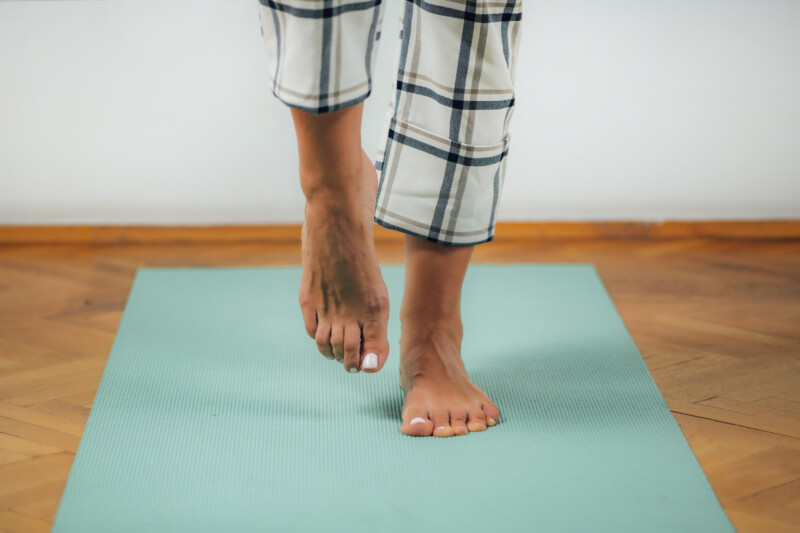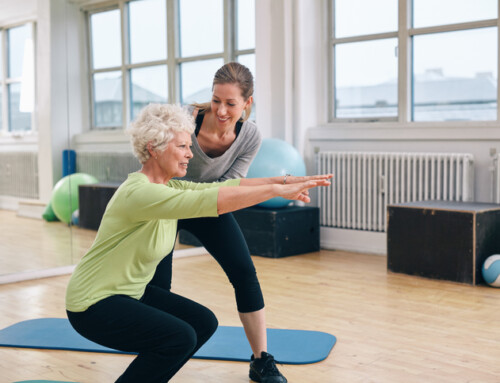Balance can be defined as maintaining weight equally to obtain a position of control while standing or in motion. Balance is composed of multiple body systems, such as vestibular, somatosensory, and visual. The vestibular system are nerve receptors located within the inner ear that are sensitive to head movement. As we move our head, a signal is transmitted to our brain to inform we are in motion and out of equilibrium, which then allows our muscles to adjust accordingly. The somatosensory system (proprioceptive) is the body’s capability to sense your limb movements. This system informs our brain when and where our limbs need to be. This system is naturally unconsciously occurring throughout the day to allow us to move. The visual system obtains continuous input for adjustments being made to react to changes in the environment. These systems all work together to maintain your coordination and return to equilibrium.
Balance is an important part for strength, endurance, flexibility, and everyday life activities. Balance is consistently being used, such as standing while cooking dinner, sitting down to drink a cup of coffee, or during fitness and workout plans. There are multiple benefits to work on improving your balance that can be integrated in various populations and environments. Below are some benefits of improving your balance.
1. Enhancing athletic performance
Balance is consistently required in walking, jogging, running, and lifting. It is essential for an individual to have efficient balance throughout their activity. Improving one’s balance can relate to reaction time/agility which is necessary for sport/fitness for overall achievements and reduction of injuries. A quicker reaction time can correspond to the difference needed between individuals competing. Balance training can allow an individual to unconsciously improve their center of gravity and body awareness during performance.
2. Injury prevention
Balance can play a key component in reducing an individual’s risk of injuries and fall prevention. It can decrease an individual’s chance of spraining an ankle or prevent a fall that can lead to a hip fracture. Fall related injuries can limit an individual’s quality of life and correspond to increased anxiety of future injuries. Balance training can allow an individual to improve their weight-bearing status, muscular strength and control, and proprioception.
3. Ease accessibility
Balance can be an important factor for individuals to access their community or within their homes. It can allow individuals to improve their independence, general health, and socialization.
4. Improvements in general health
Balance can be used to improve physical and mental health. There is a mind and body
connection required to balance. Some other health benefits to balance training include a reduced chance of obtaining back pain, arthritis, blood circulation issues, and other health conditions.
Our Capital Area Physical Therapy & Wellness offices offer programs to assist with improving your balance. Call (518) 289-5242 to schedule an appointment at one of our physical therapy clinics in Malta – Saratoga Springs or Queensbury – Glens Falls.
References:
1. Dunsky A. The effect of balance and coordination exercises on quality of life in older adults: A Mini-Review. Front Aging Neurosci. 2019;11:318. doi:10.3389/fnagi.2019.00318
2. Halvarsson A, Dohrn IM, Ståhle A. Taking balance training for older adults one step further: the rationale for and a description of a proven balance training programme. Clin Rehabil. 2015;29(5):417-425. doi:10.1177/0269215514546770
3. Minoonejad H, Bazrafshan H, Akoochakian M, Aslani M. Effect of attention instructions of balance training in athletes with ankle instability. Physical Treatments. 2018;8(1):45-54. doi:10.32598/ptj.8.1.45






